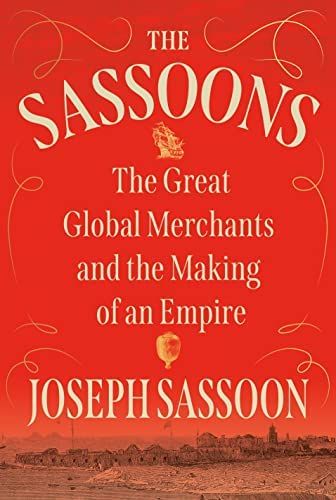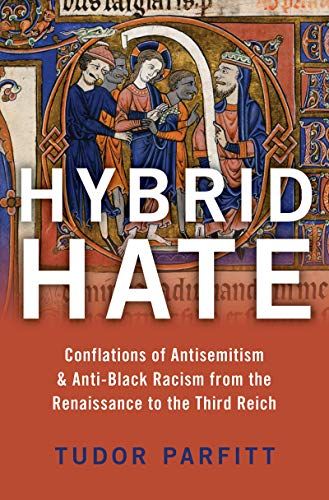
This thoroughly researched volume tells multiple histories in one: as the title states, this is first and foremost a detailed history of one branch of the Sasson family of Baghdad, that of David Sassoon, who escaped from Iraq in the late 1820s for Bushir (Persia) and later Bombay (India). As it is well known, from there the family grew into a large and successful trading firm (and later two) as it gradually moved eastwards along the routes of British colonialism, towards India, China and Singapore (and Japan), ultimately completing their trajectory in London (and in the Bahamas) in the second half of the twentieth century. This is the history of a family only in appearance. Rather, the whereabouts of its successive generations and their branching out in many directions from both a geographical and commercial point of view represent a means to explore the history of the global connections that operated within the British empire, and to see how this family and firm were able to make the most of them for commercial, social and political purposes. Although the claim might appear somewhat far-fetched—given the wealth that the Sassoon accumulated in the span of a few generations—as the Author states in the afterword to this volume this history also represents a “lesson on how refugee families contribute to the welfare of the world” (p. 306).
Rather than listing the contents of the thirteen chapters that tell the parable of the Sassoons from Baghdad to London from the late 1820s to the second half of the twentieth century, I will mention here two of the major strengths of this volume and, for reasons of space, only some of the many themes that run through it.
The first strength is the wealth of previously unexplored primary sources in different languages, including Judeo-Arabic, upon which this research is based. As befits a truly global history, sources were found in different places all over the world: in Israel (the David Sassoon Archives at the National Library of Jerusalem and at the Babylonian Jewry Heritage Centre Archives in Tel Aviv); in the UK (the British Library, British National Archives, Church of England, SOAS, Metropolitan Archives, the Rothschild Archives in London and the Brighton and Hove Archives in Brighton); in India, at the Delhi National Archives; in Hong Kong (Kadoorie Archives); in China (Shanghai Municipal Archives); in Turkey (the Ottoman Archives in Istanbul) and in the US (the Sir Ellice Victor Elias Sassoon Papers at the Southern Methodist University in Dallas). The Author also integrated this rich material with printed sources from the local Jewish and non-Jewish press in the UK, India and China. Such a wealth of material makes it possible for multiple and differentiated voices to emerge. The second strength of this book is that—differently from previous histories of the Sassoons—the Author takes the readers all the way to the final chapters of the trajectory of this extended family, through their departure from India and China, as well as from the world of trade, banking and finance after the 1950s.
As for some of the themes that run through this volume, I will mention four. The first is the transformation of the Baghdadi Jewish identity and heritage: on the long and winding road that took this family from Baghdad to London via India, China and Japan, these underwent a transformation that impacted the family as a whole and individual members separately. In parallel, it also affected those individuals, institutions, banks, trading firms, and local Jews with whom the Sassoons came in contact. This change was evident in matters of religious observance for example, as well as in the use of language. For this orthodox Jewish family from Baghdad, who later identified as Indian, and then in part as British, religious observance declined even within the boundaries of their adherence to the Baghdadi Jewish religious tradition. As for the language they used, as many of the sources examined by the Author show, Judeo-Arabic had been the lingua franca within the family and a means of communication in commerce for the first, and partly the second generation, but by the third, English had taken its place. The Baghdadi identity was then flanked by a new British one, as can be seen in the anglicization of the names of several of the fourteen sons and daughters of David Sassoon (Abdallah-Albert; Shalom Sassoon-Artur; Farha-Flora etc.) More obviously it also emerged in the baronetcies that were created for them from 1890 onwards: Abdallah-Albert, son of David and head of the firm after his father’s death, became the first baronet of Kensington-gore and of Eastern-terrace; in 1909 it was the turn of Edward Sassoon, David’s nephew, and then, in a later generation, Philip Sassoon. The gradual predominance of the British over the Iraqi identity becomes obvious also by looking at the liaisons and friendships that the Sassoons cultivated both in the Empire and within the UK, from the governor of Bombay to the Prince of Wales and later King Edward VII. A site where these two identities continued to co-exist appeared to be the home, whether in their legendary hospitality, receptions and parties, as the menu listed at pp. 149-50 shows, or in the (Eastern/oriental) furnishing and décor of the mansions in which they lived in the UK, in India and in China. Identity, as well as (upwards) social mobility, were moreover negotiated through marriage strategies. Marriage could take place within the Baghdadi community, whether in Iraq or elsewhere, with so-called European “Jewish aristocracy,” or even outside the faith. The marriage of Abraham Shalom (Arthur) Sassoon to Eugenie Louise Perugia from Triest in 1873 opened the doors of that “Jewish aristocracy” to the second generation of the Sassoons and the following ones. Other significant marriages followed: with the Poliakovs of Moscow, the de Gunzburgs of St. Petersburg and the Rothschilds of Paris and London. Marrying gentiles on the other hand could lead to disinheritance: the most famous case was that of Sigfried Sassoon, the British anti-war poet par excellence who was the great-great grandson of the original patriarch from Baghdad, and who remained unaware of his family’s background until the death of his father in 1921 (Alfred Ezra, who had married Theresa Thornycroft).
A second crucial aspect of this history is trade. The Sassons embraced, cultivated and defended free trade as the ideology and practice that regulated the economies of the British empire as a unified space of governance in the nineteenth century and in the first half of the twentieth. It allowed them to take advantage of global phenomena like trade agreements and wars—for example the two Opium Wars (1839-1842 and 1856-1860) and the American Civil War (1861-1865)—to grow and consolidate their firm on a global scale through the fluctuations of the prices of opium, cotton and other commodities. Other items gradually entered their portfolio of trade and investments, but opium and cotton really determined their positioning vis-à-vis other trading families and vis-à-vis each other within the family. From Bombay David had dispatched his sons around South, East and Southeast Asia, as well as to London, to open new branches for the firm, the David Sassoon & Co., and therefore new markets. Primary sources include correspondence between siblings across continents and generations on how to trade, which commodities to buy and sell, on which markets, where to invest, what gains or losses to report to the other branches etc. The hard-working ethics of the successive generations became more relaxed as the Sassoons entered the realms of British aristocracy and politics, but the different branches (referred to as Houses) of the family firm remained in constant contact. These questions also marked relations with other Baghdadi Jews that the Sassons employed, as well as those with other merchant partners and intermediaries, and determined how the family positioned itself in the changing economic and political global scenario in which they operated. After the death of the patriarch (1864), Elias David, the second son, who had founded the firm’s House in China, established in 1867 his own firm, the E. D. Sassoon, which became the former’s staunchest rival. The two firms (and their descendants) never reconciled, even though they allied strategically if it suited their mutual interests, for instance when public opinion, and later the British government, gradually shifted against opium as a legitimate trade between the nineteenth and twentieth centuries, causing a fall in prices on the global market.
A third theme that recurs throughout the volume is the encounter (and ensuing complex relations) between the Sassoons and Jews of different backgrounds: for reasons of language proficiency (Judeo-Arabic) and networking, the Sassons chiefly employed Baghdadis as clerks and administrators; but they also employed Bene Israel—as well as non-Jews—in the cotton mills that they established and developed in India for example. Along their path they also encountered other Jews: Ashkenazi Jews escaping from the Czarist Empire (and later Russia) in China at the turn of the twentieth century, British Jews in the UK, and central European Jews who had found a refuge in Shanghai and Hong Kong after 1933. Of all these groups, greater emphasis is placed in this volume on the Bene Israel, with whom relations were not always easy, as they in part reproduced within a Jewish framework color and colonial prejudices. Philanthropy, though, was not necessarily limited to the local dimension or to Jewish groups; it extended also back to Baghdad and was directed at improving the education and welfare of the beneficiaries by founding professional schools, libraries, literacy, welfare and children’s programs, as well as hospitals in Baghdad, Bombay, Poona, Calcutta and Shanghai. Unlike other Baghdadi families that followed their path, the Kedoories for instance, the Sassoons had little interest in using philanthropy to support Zionist projects.
The history of the Sassons could seem to be a history of men alone, as women appear only as brides and mothers, as administrators of charities endowed in their names, or in the names of the synagogues that their husbands and sons dedicated to their memory. This was the case of the Ohel Leah synagogue, established in Hong Kong in 1902, that commemorated Leah Sassoon, the wife of Elias David; and of Ohel Rachel, that Sir Jacob Elias Sassoon built in Shanghai in memory of his wife Rachel in 1921. As this volume shows, this impression is largely correct, especially because the voices of Sassoon women are generally absent in the primary sources that the Author examined. The one exception was Farha (Flora) Sassoon, a nephew of David and the wife of her great-uncle Suleiman, who took over the management of the Bombay branch after her husband’s death, only to be eventually ousted by her brothers after a few years.
Finally, a short paragraph on what appears to be two shortcomings in the volume, not in its structure or contents, but in the publishing process. The publication of the same book in 2022 with two slightly different titles—in New York by Pantheon Books (The Sassoons: The Great Global Merchants and the Making of an Empire) and in London by Allen Lane (The Global Merchants: The Enterprise and Extravagance of the Sassoon Dynasty)—is confusing and could have been acknowledged. The lack of numbered references for end-notes is a serious obstacle for the reader interested in learning about the sources, their origin and the material used for weaving the complex thread that emerges from the pages of this volume; and while this may be due to the pre-print (American) copy that was sent to this reviewer, the kindle edition of the same volume does not have end-notes references either. These two shortcomings can certainly be corrected in the next editions of this volume.
